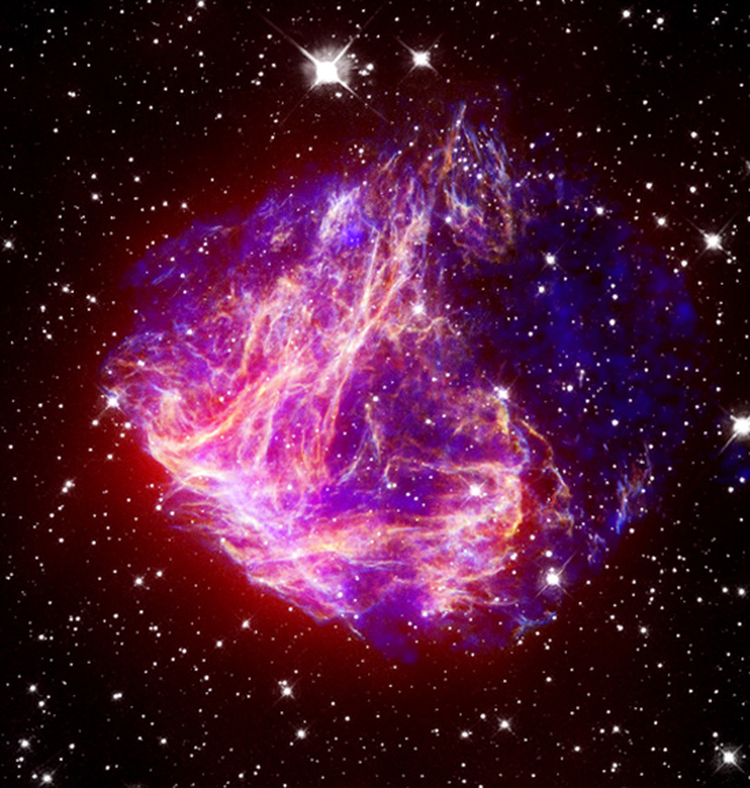
 Credit: X-ray: NASA/CXC/Caltech/S.Kulkarni et al.; Optical: NASA/STScI/UIUC/Y.H.Chu & R.Williams et al.; IR: NASA/JPL-Caltech/R.Gehrz et al.
Credit: X-ray: NASA/CXC/Caltech/S.Kulkarni et al.; Optical: NASA/STScI/UIUC/Y.H.Chu & R.Williams et al.; IR: NASA/JPL-Caltech/R.Gehrz et al.
Remnant of Destruction
A strange nebula haunts the Milky Way's companion galaxy, the Large Magellanic Cloud. Known as N49, it marks the location of the explosive death of a massive star. In visible light, N49 has an unusual, highly distorted, filamentary shape; however, X-ray emission from million-degree gas in N49 shows a more symmetric, nearly complete spherical shell. A new study of N49 using optical imaging from the Hubble Space Telescope, infrared images from the Spitzer Space Telescope, and X-ray data from the Chandra and XMM X-ray Observatories has helped scientists construct a more complete picture of the evolving physical processes occurring in this supernova remnant. The image above shows the composite of the infrared (in red), visible (in white and yellow) and X-ray (in blue) images of N49. These images help scientists understand the relative contribution of hot gas and dust in the nebula, to determine where heating and cooling occurs and to determine where and how fast moving gas from the supernova explosion crashes into pre-existing material around the star.
Published: May 18, 2015
<
HEA Dictionary ● Archive
● Search HEAPOW
● Other Languages
● HEAPOW on Facebook
● Download all Images
● Education ● HEAD
>

Each week the HEASARC
brings you new, exciting and beautiful images from X-ray and Gamma ray
astronomy. Check back each week and be sure to check out the HEAPOW archive!
Page Author: Dr. Michael F. Corcoran
Last modified Monday, 26-Feb-2024 17:46:07 EST


